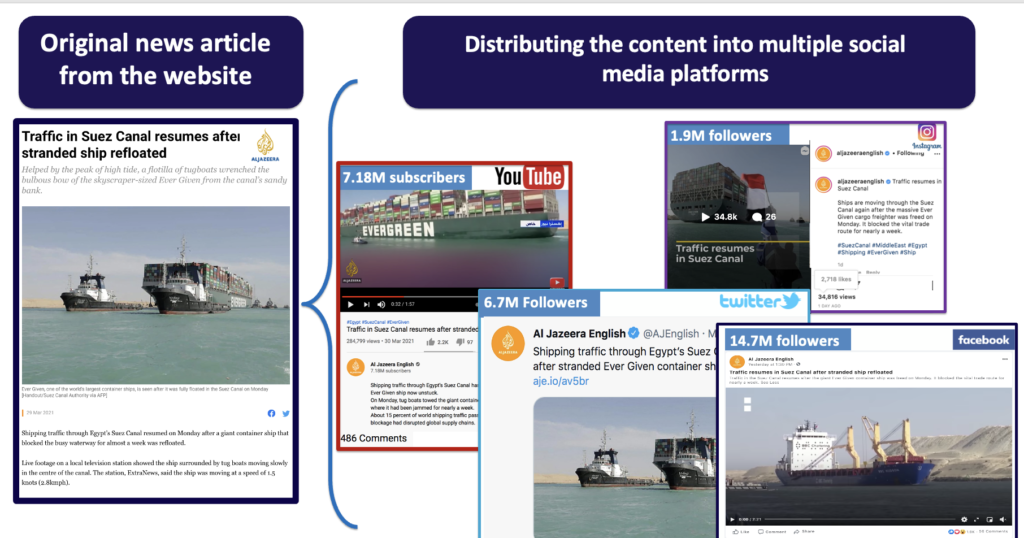
In today’s interconnected digital landscape, cross-platform shared content has emerged as a powerful tool for creators and businesses. With the ability to transcend platform limitations and reach a wider audience, cross-platform shared content has become a game-changer, enabling seamless experiences and fostering engagement on multiple fronts. However, while the benefits are substantial, it’s important to also acknowledge the challenges that come with this approach. In this blog post, we will explore the significance and impact of cross-platform shared content, highlighting its benefits, discussing the challenges involved, and how it is revolutionizing the way we consume and interact with digital media.
Breaking Down Barriers
One of the key advantages of cross-platform shared content is its ability to break down barriers and bridge the gap between various platforms and devices. In the past, content distribution was limited by platform-specific constraints, forcing creators to tailor their content for each individual platform. However, with cross-platform shared content, creators can now distribute their work effortlessly across multiple platforms, reaching a larger and more diverse audience. This not only saves time and effort but also enables content creators to focus on what they do best: creating compelling and engaging content.
Expanding Reach and Engagement
Cross-platform shared content opens up new avenues for expanding reach and engagement. By distributing content across different platforms, creators can tap into the unique user bases and demographics associated with each platform. For instance, sharing content on social media platforms like Instagram, Twitter, or TikTok can help target younger audiences, while platforms like LinkedIn can be utilized to reach a more professional and business-oriented audience. By adapting content to suit each platform’s specific requirements and preferences, creators can maximize their visibility and generate higher levels of engagement.
Seamless User Experiences
In addition to reaching a wider audience, cross-platform shared content allows for seamless user experiences. Users can access content from their preferred platforms and devices, without being restricted by compatibility issues or platform limitations. Whether it’s a video, an article, or an interactive experience, users can consume content in their preferred format, enhancing their overall experience and satisfaction. Moreover, cross-platform shared content allows for effortless transitions between platforms, ensuring that users can pick up where they left off, regardless of the device they are using.
Boosting Collaboration and Creativity
Cross-platform shared content also fosters collaboration and creativity among creators. With the ability to share and collaborate on content across different platforms, creators can leverage the strengths and capabilities of each platform to enhance their work. For example, a content creator can shoot a video on their smartphone, edit it on their computer, and then seamlessly share it across various social media platforms for maximum exposure. This collaborative and flexible approach not only fuels innovation but also empowers creators to experiment with different formats and engage with their audience in novel ways.
Challenges
While cross-platform shared content brings numerous advantages, it’s essential to acknowledge a potential disadvantage associated with this approach. One of the challenges is maintaining consistency and quality across different platforms. Each platform has its own unique requirements, formats, and user preferences. Ensuring that the content translates seamlessly across various platforms can be a demanding task, requiring extra effort and resources. Content creators may need to adapt their content, formats, or even modify their creative vision to align with the specific constraints of each platform. Failing to maintain consistency can lead to fragmented user experiences and dilute the brand identity. Therefore, while cross-platform shared content offers tremendous opportunities, it’s crucial for creators to strike a balance between customization for each platform and maintaining a cohesive brand image.
Conclusion
Cross-platform shared content has revolutionized the way we consume and interact with digital media. By breaking down barriers, expanding reach and engagement, enabling seamless user experiences, and boosting collaboration and creativity, cross-platform shared content empowers creators and businesses to connect with audiences in meaningful and impactful ways. However, it’s important to approach cross-platform sharing with caution, considering the challenges it presents, such as maintaining consistency and quality across different platforms. By finding the right balance between customization and brand cohesion, creators can harness the full potential of cross-platform shared content while mitigating the risks. As the digital landscape continues to evolve, embracing cross-platform shared content will undoubtedly become increasingly vital for content creators, businesses, and individuals seeking to maximize their online presence and engage with diverse audiences. With careful planning and strategic execution, cross-platform shared content can be a powerful tool for breaking barriers, expanding reach, and creating immersive experiences that resonate with audiences across multiple platforms.
Aldous, K, An, J, and Jansen, B. J. (2019) Stylistic Features Usage: Similarities and Differences Using Multiple Social Networks. 11th International Conference on Social Informatics (SocInfo2019). Doha, Qatar. 18-21 November, 309-318.
